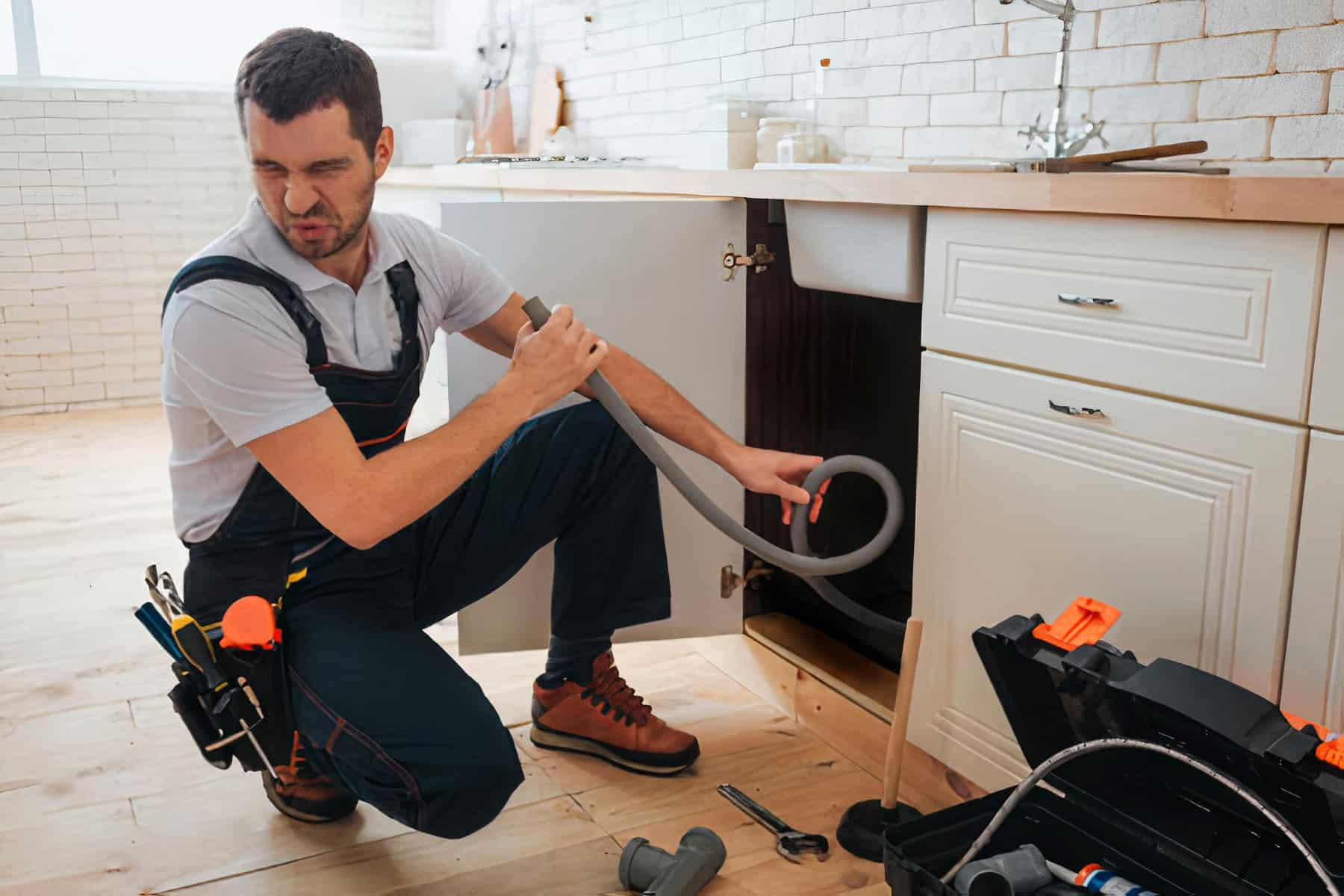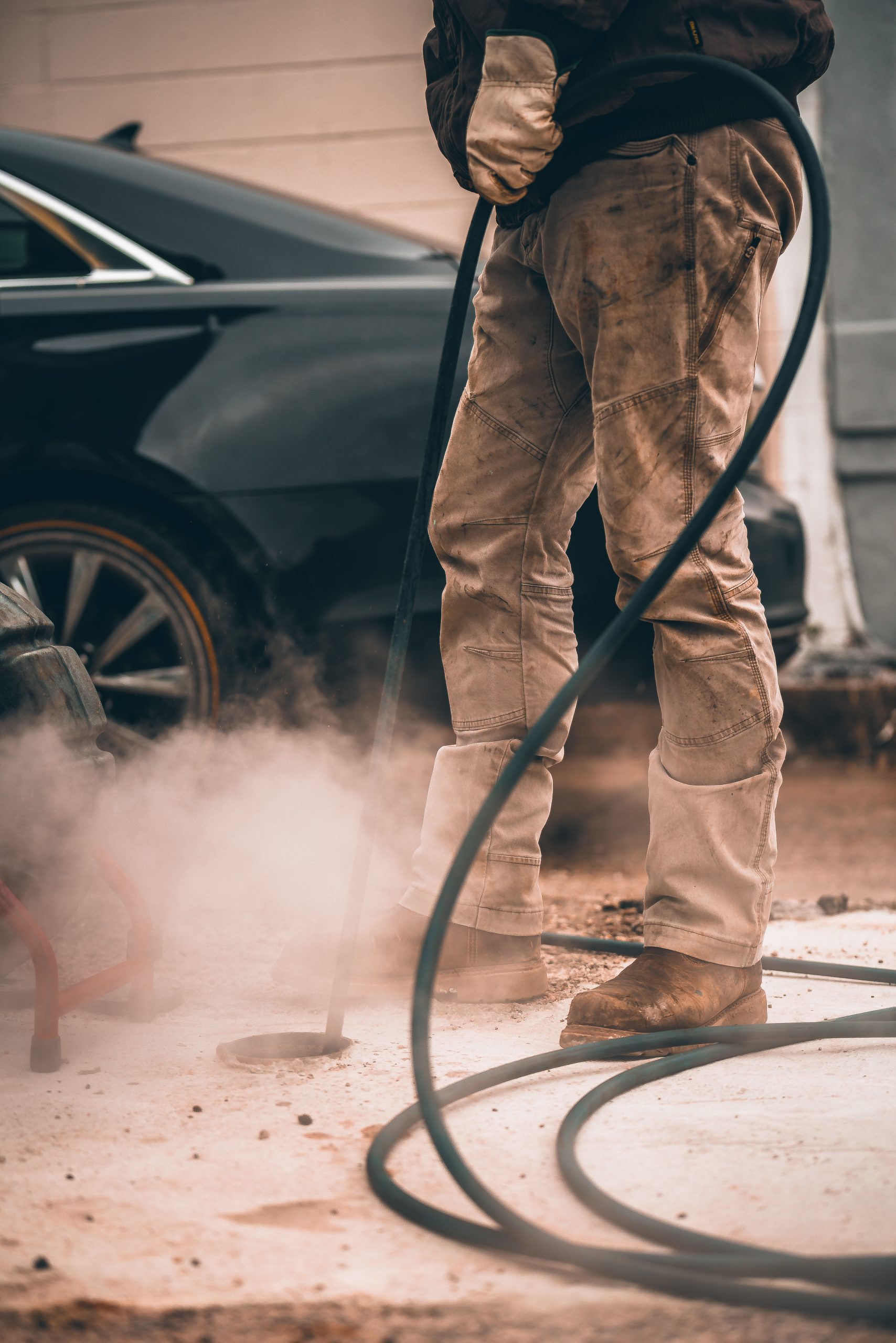Why Does My House Smell Like Sewage
There are only a few things worse than waking up one day or walking into your home and finding it stinking like the sewer. Having a sewer smell in the house is horrible and not something you should have to deal with for a long time.
There are multiple reasons for a bad smell in the house; it can sometimes be tiny. It is good to remember that you should get to the root cause of the plumbing odors because releasing harmful gasses in the house, such as hydrogen sulfide, can cause health issues for you and your loved ones.
Sewer gasses can also release a very high amount of methane into your house, which is highly flammable and dangerous and linked to side effects such as headaches and loss of consciousness.
Unexplained sewer-like smells in the house aren’t something you should ignore, but finding the source can be quite tricky because there is certainly more than one reason why your home can smell like a sewer.
We’ve developed an extensive step-by-step guide that will help you determine the source of the bad smells in your house and ways to eliminate the cause.
Common Sources Of Sewer Odors Inside The House
When you first notice a sewer smell in the house, your first instinct is to clean up your toilet and use fans and air fresheners. However, if even after cleaning the toilet thoroughly and using fragrant agents, you still notice the smell, chances are that there is another source of sewage smell in the house.
If this is the case, you need to investigate the following sources in more detail to determine which one is causing your house to stink like the sewer.
Odor From Shower Drain
You may hold your toilet responsible for a sewer-like smell in the house, but surprisingly, it’s not the leading cause. When the house stinks like a sewer, inspect your shower drain. Following are a few reasons why the bathroom smells through the shower drain:
A Dry P-Tap
If your bathroom smells like sewer right after a shower, the P-trap is the cause. The P-trap is a U-shaped pipe underneath the shower drain through which the water passes. A P-trap is used to retain a small amount of water at all times so sewer gasses do not back up the pipe and get released into the bathroom.
If you don’t use your shower for some time, the P-trap may dry up, and sewer gasses may be released into the bathroom, making it smell like the sewer.
The easy remedy is simply running the shower for a few minutes as the water drains and re-accumulates in the P-trap. You can also add some fragrant agents, eliminating the smell and making your bathroom smell fresh in no time.
If you use your shower regularly and still face a sewer gas smell in the bathroom, the issue may be more severe, like the P-trap leaking. If this is the case, you will need help from a professional plumbing company to repair it.
Biofilm Build-Up
Noticing a rotten egg smell coming from the shower drain? Biofilm can be the cause. Biofilm is a thin layer of smelling bacteria that develops due to all that skin debris, dirt, shampoos, soap, and oil matter that goes down the drain over time.
Fortunately, removing the biofilm is not something that requires professional help, and there are a few steps that you can try to eliminate the smell of sewer in the bathroom due to biofilm accumulation:
- Open up the shower drain using an appropriate-size screwdriver;
- Boil some water and let it cool down to 150 Fahrenheit before you pour it down the drain;
- Pour one cup of distilled vinegar down the drain after the water;
- Pour half a cup of baking soda immediately after the vinegar;
- Let the above sit in the drain for two hours and follow with a gallon of hot water;
- Use a drain brush to clear out the rest of the debris.
The above is a straightforward method to eliminate the sewer smell in the house due to a clogged shower dragon, but it’s always best to engage a professional since you always risk damaging the drain.
Odors From Toilets
Your first instinct is always to check the toilet when the house smells like the sewer. Usually, a few flushes or fragrant products can eliminate the sewer smell from the bathroom, but when it doesn’t, it indicates a severe problem.
Common causes can lead to a sewer smell from the toilet, including a damaged toilet, a broken seal, or a badly installed or cut vent pipe.
Broken Or Loose Seal
A toilet is usually attached to the drain with the help of two seals. If even one of these seals is broken or loose, it can release sewer gas from the toilet. If the toilet bowl is not filling up with water to an optimal level, a broken seal is the cause.
If the toilet bowl is loose on the wax ring, water can accumulate, causing bacteria to grow around the area, resulting in a sewer-like smell in the house.
Another reason may be a cracked toilet. Toilets can get cracked around where bolts are used to fasten them to the ground or when you use an auger too aggressively. Even a tiny crack can release sewer gases into your house.
The easiest way to fix a broken or loose seal is to apply a fresh coat of caulk around all your toilet seals and to the holes where the toilet seat is attached to the ground. This should seal any cracks and prevent the sewer-like smell.
You can replace the wax ring if the issue is a broken ring and a loose toilet bowl.
Improperly Cut Or Installed Vent Pipe
Suspecting a foul odor around the walls near your toilet? The cause can be an issue with the vent pipes. Vent pipes are usually added to the walls of your home to send odors outside the house so your house doesn’t smell like the sewer.
Sometimes, a professional can install these pipes incorrectly, which can cause a sewer smell from the toilet.
The easiest way to remedy this issue is to call a professional to diagnose the problem and adequately re-install the pipes.
The vent pipes can also develop cracks that allow the sewer smells to seep into the house. A plumber can use smoke to identify the location of the crack and then repair it.
Odors From Sinks
It’s no fun when your kitchen sink smells like sewage. Any sink in the house can smell like the sewer if there are issues like a dry P-trap or build-up in the overflow.
If the sink had not been used for a long time, the water in the P-trap might have evaporated. To eliminate the pipe smell, simply run water down the drain for a few minutes.
Build-Up In The Sink Overflow
Some sinks have an overflow mechanism. This is usually a tiny hole near the top that prevents water from an overflow from flooding the bathroom or kitchen. Over time, grime, dirt, and mildew can accumulate in this area, which can cause bacteria growth and a sewer smell in the bathroom sink.
Fortunately, this is a problem that can be easily fixed by following these steps:
- Use a small bottle brush and scrub away the debris in the inner area of the overflow;
- Make a half-and-half solution of bleach and water;
- Use the bottle brush and apply the bleach solution to the overflow area to eliminate bacteria and foul odors.
If the issue persists, the plumbing odors don’t disappear even after thoroughly cleaning the sink. You need to have a professional look at your sink because a sewage smell from the sink can mean something more serious.
Okors From A Washing Machine
We rarely suspect the laundry room when there is a sewer smell. The washing machine can also be a leading reason for a sewage-like smell. If your washer smells like sewer, there can be one of the following reasons:
Clogs In The Drain
A clog in the drain is a common cause of the sewer smell from the washer. If there is a clog in the drain, materials such as hair and soap can get attached and build up into a more oversized clog. Bacteria can grow on organic matter, which causes a sewer smell in the washer.
Although you can remove clogs through various methods, it is best to have a professional deal because more significant clogs can often damage your pipes.
Improperly Installed P-Trap
P-traps are also essential for washing machine drainage. Today’s washing machines have flexible hose pipes connected to a drain box and a P-trap.
The flexible hose pipe can often be installed incorrectly, which leads to sewage-like smells seeping out of the machine; the hose is sometimes installed too far into the drain box pipe, which limits the functioning of the P-trap.
To eliminate sewage-like smells in the house caused by the washing machine, pull back the drain hose pipe from the drain box and keep it only 8 inches away. This will allow the P-Trap to function normally, and the smells will be eliminated.
Clogged Vent Pipe
As explained before, a vent pipe is supposed to redirect all the sewer gasses from your home, but it can get clogged or cracked, allowing the sewage smells to seep into your home.
You can climb onto your rooftop with a flashlight and look down your vent pipes to see if there are any obstructions, such as an object or a bird’s nest. Then, you can use an auger to dislodge or remove the clog.
The best solution is to hire a professional plumber to look at the issue so you don’t damage the vent pipe.
Odors From Water
A few things are as irritating as water in the house, which smells like a sewer. This stands true for both drinking and non-drinking water. If your water smells like sewer, chances are that the following culprits are responsible:
- Algae in the water source, like a pool in the house;
- Bacteria buildup in the pipes;
- The buildup of decaying matter in the pipes;
- Dirty filter membranes for drinking water.
Although you can locate the source of the stagnant water smell in the house, you should engage a professional plumber to inspect the issue and suggest the right solution.

Call The Professionals
Call Fischer Plumbing Right Away And Get The Best Sewer Line Repair Service At Your Doorstep.
FREQUENTLY ASKED QUESTIONS
A pipe locator has two main parts, a detector line which is a coil of wire with detectors on it that are inserted into a drain or a sewer cleanout, and a transmitter which is used to locate the detector line in the sewer line. Both parts work on the same frequency.
As the detector line is sent into the sewer line, the transmitter is hovered over the ground to receive a signal from the detector line. A beeping sound signals the location of the main sewer line.
A pipe locator works on the principle of radio frequency. The locator and the wand should be on the same frequency to find water pipes underground. As the wand gets closer to the detector line, the line starts producing a high-pitched beeping sound. The higher the beeping sound, the closer you are to the sewer line’s location.
A GPR (Ground Penetrating Radar) Locator is a tool that can find underground water pipes easily. These are available in most local hardware stores and online stores for major hardware vendors.
To locate power with a locator, you need to project current by connecting the transmitter with the main power supply line. Then you set the frequency of the receiver and the transmitter at the same level and begin poking around with the wand to pick up the highest beeping sound.









